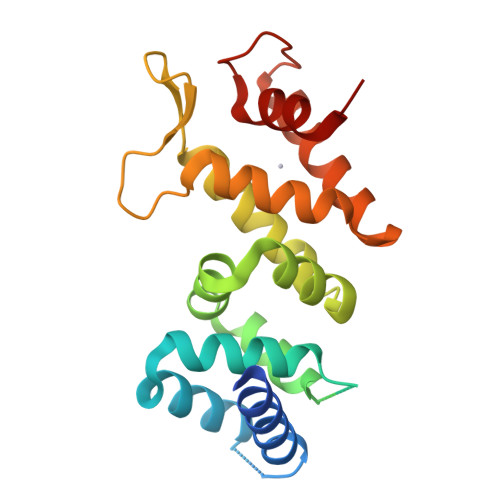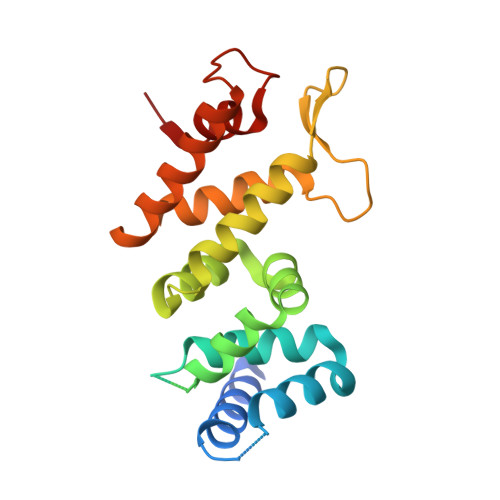Structural determinants of human FANCF protein that function in the assembly of a DNA damage signaling complex.
Kowal, P., Gurtan, A.M., Stuckert, P., D'Andrea, A.D., Ellenberger, T.(2007) J Biological Chem 282: 2047-2055
- PubMed: 17082180
- DOI: https://doi.org/10.1074/jbc.M608356200
- Primary Citation of Related Structures:
2IQC - PubMed Abstract:
Fanconi anemia (FA) is a rare autosomal recessive and X-linked chromosomal instability disorder. At least eight FA proteins (FANCA, B, C, E, F, G, L, and M) form a nuclear core complex required for monoubiquitination of a downstream protein, FANCD2. The human FANCF protein reportedly functions as a molecular adaptor within the FA nuclear complex, bridging between the subcomplexes A:G and C:E. Our x-ray crystallographic studies of the C-terminal domain of FANCF reveal a helical repeat structure similar to the Cand1 regulator of the Cul1-Rbx1-Skp1-Fbox(Skp2) ubiquitin ligase complex. Two C-terminal loops of FANCF are essential for monoubiquitination of FANCD2 and normal cellular resistance to the DNA cross-linking agent mitomycin C. FANCF mutants bearing amino acid substitutions in this C-terminal surface fail to interact with other components of the FA complex, indicating that this surface is critical for the proper assembly of the FA core complex.
Organizational Affiliation:
Department of Biological Chemistry and Molecular Pharmacology, Harvard Medical School, Boston, Massachusetts 02115, USA.



















